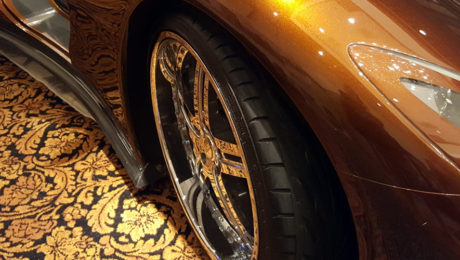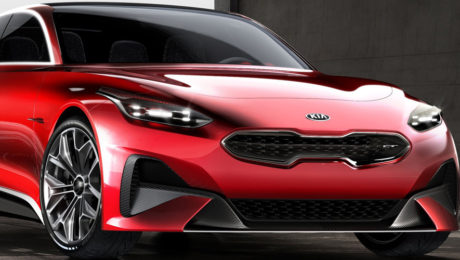YBLTV Review: Faraday Future
The successful emergence of a new company into a competitive, highly saturated industry such as auto manufacturing is daunting and often painful. Faraday Future has experienced a series of highly publicized financial setbacks since beginning operations in the spring of 2014, largely tied to the financial struggles of its principal funding source, controversial Leshi Information and Internet Technology (also called LeEco) CEO Jia Yueting.
Yet the ambitious Faraday has managed to successfully create a production model, the fully electric FF 91, which reveals a level of innovation that I believe will have a lasting impact on the industry, whether or not it ever enters the consumer market.
My first look at the FF 91 was during a December, 2016 press junket at the company’s Gardena, California facility ahead of the official unveiling at the Consumer Electronics Show two weeks later.
“We are not just putting together a product that is the typical evolution of existing products,” explained Nick Sampson, Faraday Senior Vice President of Product Research and Development. “It is starting with a clean sheet of paper and building from nothing.
“The way to get to that future technology is to look at ourselves, imagine ourselves in the future. At what people want and need, and then look back at how we can get that. So our mission is to think and act in creative ways most people cannot even imagine.”
What Faraday Future designers and engineers have imagined is a car of undeniable physical beauty, a sleek profile with a subtly sloping windshield that reaches nearly to the front of the vehicle. Despite the elegant shape, the FF 91 is a deceptively large vehicle that is built for power.
The test drive ride along in the parking lot of the nearby StubHub Center sports complex revealed high stability through tight turns and the ability to reach 60 mph from a stationary position so quickly I couldn’t help but feel a bit relieved when the driver abruptly let his foot off the accelerator and allowed the car to slowly glide to a stop
The FF 91 tops out at 1050 horsepower that can propel it from 0-60 mph in 2.39 seconds, which - according to Faraday - represents a commercial auto record. My 0-60 test was not nearly so fast, but certainly swift enough to impress industry writers on hand and hint at the car’s potential.
Battery grids - called strings - along the base of the frame provide this power to between one and three motors. A four motor modification is also available that would allow for an all-wheel drive system. Standard platform architecture is designed to be adaptable to create a range of models.
“This is a new species of vehicle,” said Sampson. “That flexibility and architecture allow us to develop vehicles that have the performance of a sports car, while having the agility and feel of a smaller compact car and yet be quite large.”
According to Richard Kim, Faraday’s lead designer, the FF 91 features many first-to-market elements, both in the interior and exterior, including unsurpassed connectivity, aromatherapy and chair massage capabilities.
These features were not included in the product model I was given access to, so a review of their qualities and effectiveness at this time is not possible.
Not only will no key be required, but no door will have to be manually opened either. Bluetooth-enabled phones and facial recognition cameras in the b-pillar will allow for entry. Once a driver or passenger sits in the car, more cameras will detect their identity and personalize their driving/riding experience, from the position of their seat to the movie they are in the middle of watching on Netflix.
The FF 91 is intended for fully autonomous driving, once regulations allowing for driverless vehicles are in place. The car is ringed by a bank of lights that provide both a distinctive style and a means for the car to communicate with other drivers and pedestrians through pulsing light patterns.
In the Gardena facility parking lot, one production model was given the task to park itself via driverless technology. The vehicle moved slowly through the rows of employee cars until an empty space was located. The car then backed up and efficiently tucked itself into the spot.
Such technology is certainly impressive and the convenience of such a feature is undeniable. I wonder if the car makers have overloaded this vehicle with more technological features and gadgetry than most drivers would have need or want for, not to mention the means. The company has not released the projected purchase price of the FF 91, but somewhere within the range of $200,000 to $300,000 is expected.
“Once you own an FF 91, you can get rid of your other cars,” proclaimed Yueting at the Jan. 3 CES unveiling of the car inside the Pavilion at the Las Vegas Market. “We are not just a beauty and new, but a globally shared internet mobility ecosystem.”
The carmakers at Faraday have produced a groundbreaking vehicle that offers a glimpse of a likely auto world future. The innovations will certainly play some part in shaping the way people understand the experience of operating or riding in an automobile. Whether Faraday itself and descendents of the FF 91 will be able to live in that world remains an open question.



